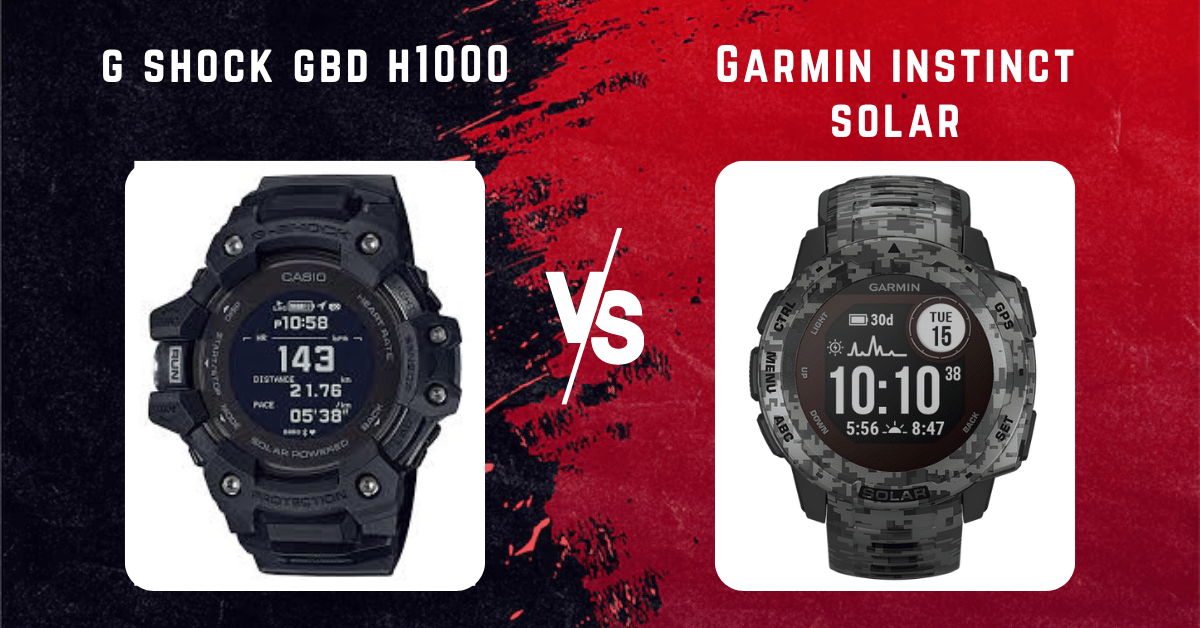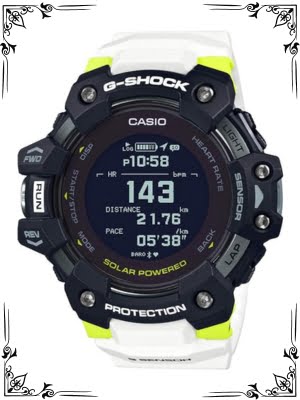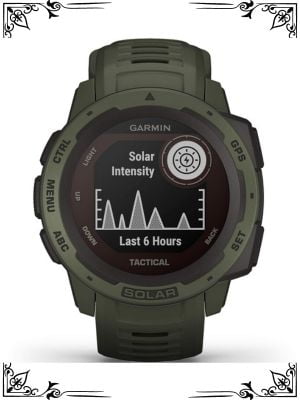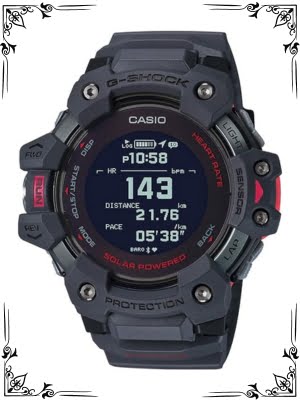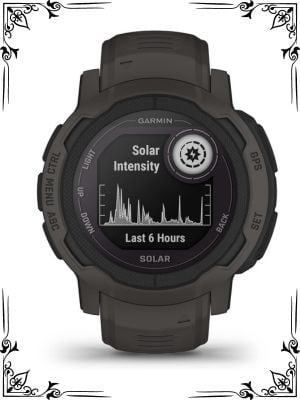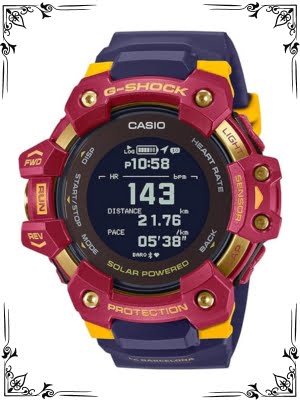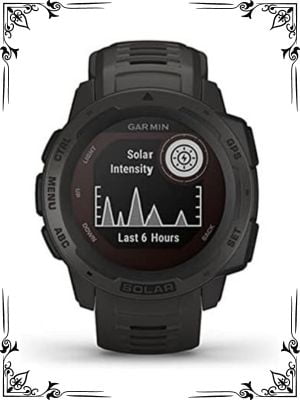G-Shock GBD-H1000: All about options – built-in GPS, Bluetooth for app integration, detailed adventure tracking & performance analysis. Garmin Instinct Solar: Self-sufficiency focus – impressive battery life with solar charging, and core training functions, ideal for adventures without needing a constant app connection.
Introduction
The call of adventure beckons, and you’re ready to answer. But with a plethora of outdoor watches vying for your wrist real estate, choosing the perfect companion can feel like navigating uncharted territory. Two contenders rise to the challenge: the G-Shock GBD-H1000 and the Garmin Instinct Solar.
Both boast impressive functionalities and rugged construction, but which one will become your trusted explorer’s aide? Don’t worry, intrepid adventurer! This comprehensive guide will dissect their technical specifications, design elements, and user experiences, helping you choose the timepiece that perfectly complements your thirst for exploration.
A Blast from the Past: A Look at the G-Shock and Garmin Legacies
G-Shock: Established in the 1980s, G-Shock carved a niche for itself with a reputation for unmatched toughness and functionality. Known for their shock resistance and bold designs, G-Shock watches have become synonymous with resilience and pushing boundaries.
Garmin: Founded in 1989, Garmin established itself as a leader in GPS technology, particularly for aviation and marine applications. Their expertise in GPS and fitness tracking has translated into a robust line of outdoor watches, including the Instinct Solar.
Technical Breakdown: Unveiling the Inner Workings
Now, let’s take a closer look at the technical specifications of each watch, highlighting the key differences in a table:
| Feature | GBD-H1000 | Garmin Instinct Solar |
|---|---|---|
| Movement | Quartz (battery-powered) | Quartz (battery-powered) |
| Battery Life | Up to 14 months (standard mode) | Up to 50 days (watch mode) |
| Battery Charging: | Standard battery replacement | Solar charging + standard battery backup |
| Timekeeping | Digital and analog hands | Digital and analog hands |
| World Time | Yes | Yes |
| Stopwatch | Yes (up to 100 hours) | Yes (up to 100 hours) |
| Countdown Timer | Yes (up to 24 hours) | Yes (up to 24 hours) |
| Alarm | Yes (with snooze) | Yes (with snooze) |
| Illumination | LED backlight | LED backlight |
| Water Resistance | 200 meters (20 bar) | 100 meters (10 bar) |
| GPS Tracking: | Yes | Yes |
| Navigation System: | GPS** | GPS + GLONASS** |
| Bluetooth Connectivity | Yes (via the G-Shock Connected app) | Yes (limited; for phone notifications) |
| Mobile App Integration | Yes (via G-Shock Connected app) | Yes (limited; Garmin Connect app) |
| Barometer, Altimeter, Compass | Yes | Yes |
| Step Counter | Yes | Yes |
| Distance Tracking | Yes (GPS) | Yes (GPS) |
| Calories Burned | Yes (estimated) | Yes (estimated) |
| Training Modes | Running, Cycling, Fishing, etc. | Running, Cycling, Hiking, etc. |
| Auto Lap | Yes | Yes |
| Manual Lap Memory | Up to 100 laps | Up to 100 laps |
| Training Log | Yes (detailed data via app) | Yes (basic data on watch) |
As you can see, both models offer a comprehensive suite of functionalities like GPS tracking, environmental sensors, and training modes. The most significant differences lie in their battery life, charging methods, navigation systems, and app integration.
Understanding the Power Divide:
GBD-H1000: This model boasts a respectable 14-month battery life in standard mode. However, it relies on a traditional battery replacement system. While not a dealbreaker for most users, it’s something to consider if you frequently embark on extended expeditions where access to a replacement battery might be limited.
Garmin Instinct Solar: This watch shines (pun intended) with its solar charging capabilities. In watch mode with sufficient sunlight exposure, it boasts a remarkable battery life of up to 50 days. This feature becomes invaluable for long journeys where frequent charging opportunities might be scarce. Additionally, it has a standard battery backup for scenarios where solar charging isn’t available.
Navigating the World:
GBD-H1000: This model utilizes the GPS navigation system, allowing you to track your adventures and analyze routes in detail.
Garmin Instinct Solar: The Instinct Solar ups the ante with a dual-satellite navigation system, featuring both GPS and GLONASS. GLONASS, a Russian global navigation satellite system, can offer improved accuracy and signal reception in certain regions, particularly in parts of Europe and Asia.
Connecting to Your World (or Not):
GBD-H1000: This model boasts Bluetooth connectivity which allows you to pair it with the G-Shock Connected app. This app unlocks a wealth of features, including detailed post-workout analysis, training data visualization, and watch customization options.
Garmin Instinct Solar: The Instinct Solar offers limited Bluetooth connectivity, primarily used for receiving phone notifications on your wrist. While it has its own Garmin Connect app, the level of data analysis and customization offered might be less comprehensive compared to the G-Shock Connected app.
So, the choice between these two models boils down to your priorities:
Do you prioritize detailed post-workout analysis and customization through a smartphone app, and are comfortable with periodic battery replacements? Choose the GBD-H1000 for its Bluetooth connectivity and app integration.
Do you value extended battery life with solar charging capabilities and prioritize core training functionalities without sacrificing essential features like GPS tracking? Then the Garmin Instinct Solar might be your perfect match, offering self-sufficiency and reliable navigation for your adventures.
Design and Aesthetics: Built for the Elements
Both watches prioritize functionality and durability, but with subtle aesthetic differences:
Dial Design:
GBD-H1000 & Garmin Instinct Solar: Both models share a similar digital display with a negative format (dark digits on a light background) and small analog hands for timekeeping. Additional sub-dials display various functionalities like GPS data, sensor readings, or training information.
Case and Bracelet:
GBD-H1000: The GBD-H1000 features a slightly bulkier profile with a shock-resistant resin case and a textured resin strap for improved grip. It comes in a variety of color options to match your style.
Garmin Instinct Solar: The Garmin Instinct Solar has a slightly slimmer profile compared to the G-Shock. It also utilizes a shock-resistant polymer case and a comfortable silicone strap. Similar to the GBD-H1000, it boasts a variety of color options.
Brand Image:
G-Shock: G-Shock embodies toughness and functionality, making them ideal companions for those who push boundaries. Their bold designs might appeal to those who appreciate a statement piece.
Garmin: Garmin is known for its expertise in GPS technology and caters to a fitness-oriented audience. Their focus on functionality might resonate with those who prioritize performance tracking over flashy aesthetics.
User Feedback: What the Explorers Say
GBD-H1000:
Users appreciate the convenience of Bluetooth connectivity and the detailed training data offered by the app.
The built-in GPS tracking is praised for its accuracy, especially during hikes and trail runs.
Some users report occasional Bluetooth connectivity hiccups, although these can often be resolved with app updates or phone reboots.
A few users find the watch’s bulkier profile less comfortable for everyday wear compared to slimmer G-Shock models.
Garmin Instinct Solar:
Users love the extended battery life and the convenience of solar charging, particularly during long expeditions.
The watch’s durability and resistance to harsh elements are highly praised by outdoor enthusiasts.
The built-in GPS tracking with GLONASS support is appreciated for its improved accuracy in certain regions.
Some users find the Garmin Connect app’s data analysis capabilities less comprehensive compared to the G-Shock Connected app.
Common Problems: Potential Pitfalls to Consider
While both the G-Shock GBD-H1000 and Garmin Instinct Solar are renowned for their durability, a few minor issues have been reported:
Negative Display: The negative display on both models might be harder to read in low-light conditions compared to some G-Shock models with positive displays.
Bulkier Profile (GBD-H1000): The GBD-H1000’s slightly bulkier profile might be less comfortable for everyday wear for some users, especially those with smaller wrists.
Limited App Integration (Garmin Instinct Solar): The limited Bluetooth connectivity and potentially less comprehensive data analysis capabilities of the Garmin Connect app might be a drawback for users who crave detailed post-workout breakdowns and extensive customization options.
Solar Charging Reliance (Garmin Instinct Solar): While solar charging is a fantastic feature, it relies on sufficient sunlight exposure. For adventures with limited sunlight, relying solely on solar power could potentially impact battery life.
The Final Lap: Choosing Your Champion Explorer’s Companion
With a clearer understanding of the technical specifications, design nuances, and user experiences, it’s time to pick your champion outdoor watch. Here are some key factors to consider:
Your Adventure Style:
Frequent Explorer with Smartphone Reliance: If you regularly embark on adventures and value detailed data analysis with smartphone integration, the GBD-H1000 is a perfect companion.
Long-Distance Adventurer Prioritizing Battery Life: For those who prioritize extended battery life for remote expeditions and value self-sufficiency, the Garmin Instinct Solar shines. Its solar charging capabilities and core functionalities ensure reliable timekeeping and essential tracking features even in situations with limited access to traditional charging methods.
Considering the Intangibles: Personal Preferences
Technical specifications are crucial, but your personal preferences also play a role. Here’s a quick recap to solidify your decision:
Do you crave detailed data analysis and the convenience of app integration for post-adventure breakdowns? Choose the GBD-H1000 for a feature-rich, smartphone-connected experience.
Do you prioritize long battery life with solar charging capabilities and value a “less tech-dependent” approach, focusing on core functionalities for navigation and training? Then the Garmin Instinct Solar might be your ideal choice, offering a balance of functionality and self-sufficiency.
Ultimately, There’s No Wrong Choice – Just the Right Champion for You!
This guide has equipped you with the knowledge to make an informed decision. Both the GBD-H1000 and Garmin Instinct Solar are exceptional outdoor watches, upholding their respective brand legacies of durability and functionality. Ultimately, the best choice depends on your individual needs and preferences. Consider your typical adventure style, the importance of app integration for data analysis, your desired level of battery life, and the significance of solar charging capabilities.
So, gear up with the outdoor watch that best suits your exploration style. Confidently conquer any challenge that comes your way, with a timepiece that can withstand the elements and become a trusted companion on your expeditions. Remember, the perfect outdoor watch awaits – choose wisely and embark on your next adventure with a champion on your wrist!
Conclusion
The G-Shock GBD-H1000 and Garmin Instinct Solar represent distinct approaches to outdoor timekeeping. The GBD-H1000 excels for data-driven adventurers with its built-in GPS, Bluetooth connectivity, and detailed app integration. The Garmin Instinct Solar reigns supreme for long-distance explorers who value extended battery life with solar charging and a focus on core functionalities for navigation and training.
Both models offer exceptional durability and a comprehensive suite of functionalities, making them ideal companions for exploring the great outdoors. By understanding their strengths and weaknesses, you can confidently choose the outdoor watch that aligns perfectly with your thirst for adventure.
FAQs
1. Are these watches waterproof?
Yes, both the GBD-H1000 (200 meters) and Garmin Instinct Solar (100 meters) boast water resistance, making them suitable for various water activities. However, the G-HBD1000 offers superior water resistance for deeper dives.
2. Which watch is more accurate for tracking workouts?
Both models offer similar accuracy for built-in functionalities like distance and pace tracking. The GBD-H1000 might have a slight edge due to the potential for more comprehensive data analysis through the app.
3. Can I replace the battery in these watches?
Yes, both models have replaceable batteries. However, the Garmin Instinct Solar’s solar charging significantly reduces replacement frequency compared to the GBD-H1000’s standard battery life.
- GBD-H1000: Periodic replacements needed (1-2 years).
- Garmin Instinct Solar: Solar charging extends battery life, with a backup battery for low-light situations. Replacements are less frequent.
4. Do these watches offer heart rate tracking?
Neither the GBD-H1000 nor the Garmin Instinct Solar has built-in heart rate monitoring. However, both are compatible with external heart rate sensors that can be paired via Bluetooth (for GBD-H1000 only).
5. Are there any other G-Shock outdoor watches I should consider?
G-Shock offers a variety of outdoor watches catering to different needs. Here are a few examples:
- G-Shock GWG-1000: This model boasts enhanced shock resistance and mud resistance, making it ideal for extreme environments.
- G-Shock GPR-B1000: This watch prioritizes advanced navigation features with Multi-Band 6 Atomic Timekeeping, offering superior timekeeping accuracy for remote expeditions. However, it lacks Bluetooth connectivity for app integration.
Ultimately, the best G-Shock for you depends on your specific needs, budget, and preferred functionalities. Consider researching other G-Shock models to find the perfect fit for your outdoor pursuits.

